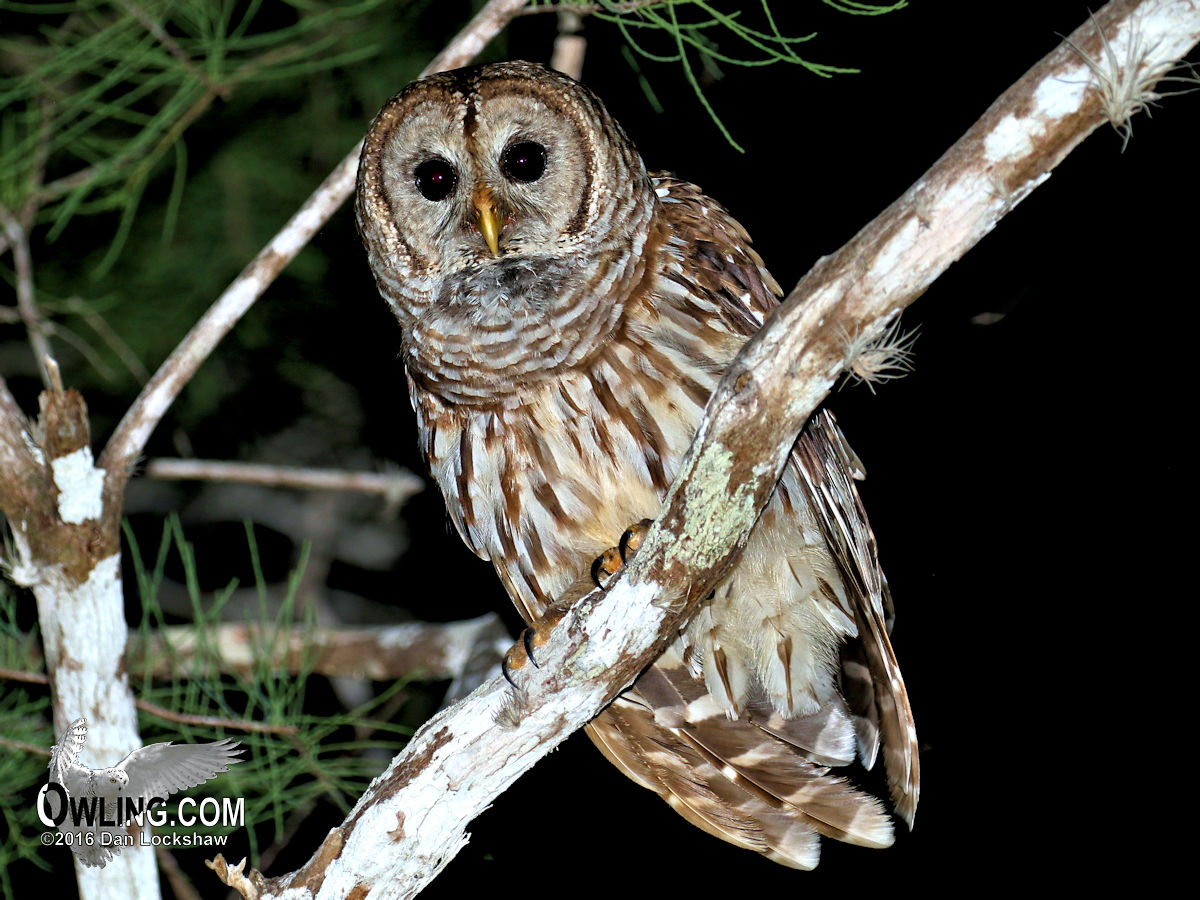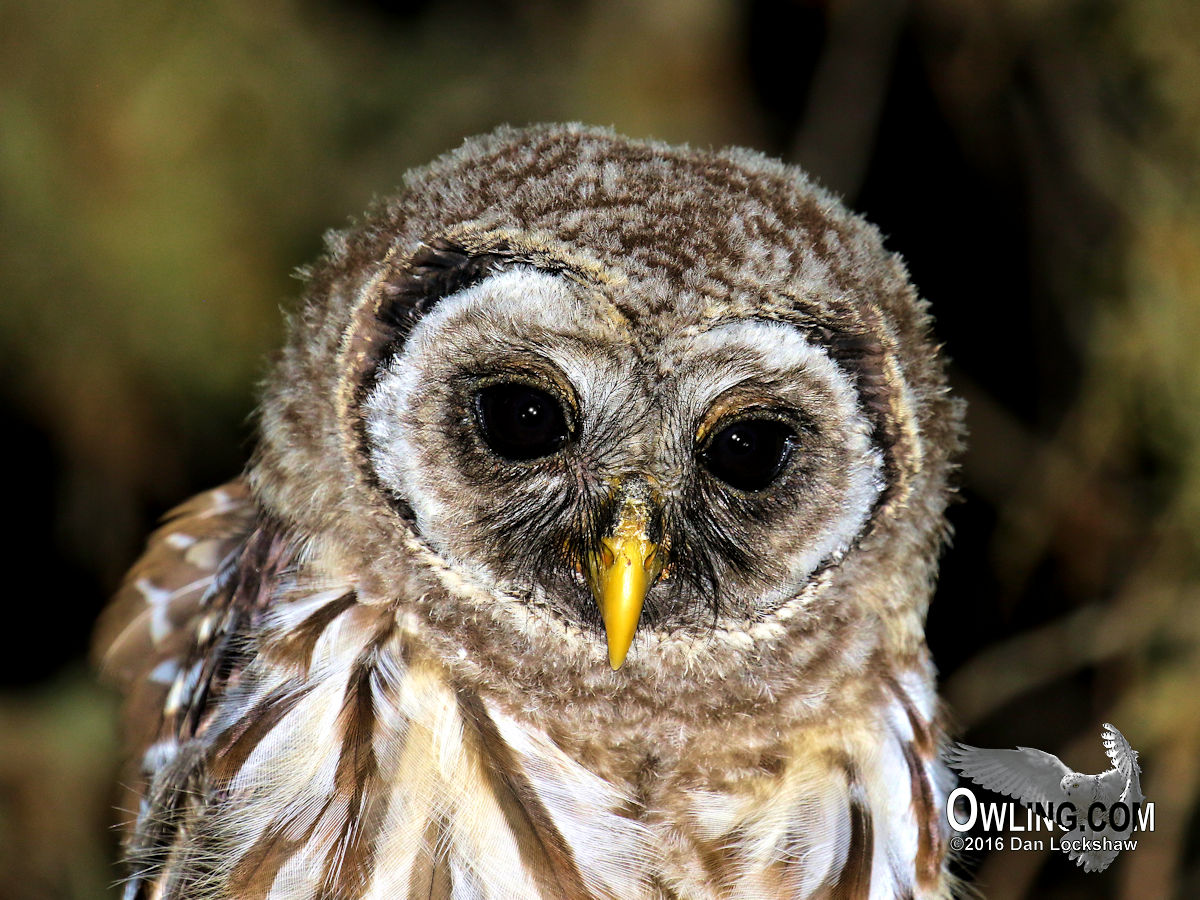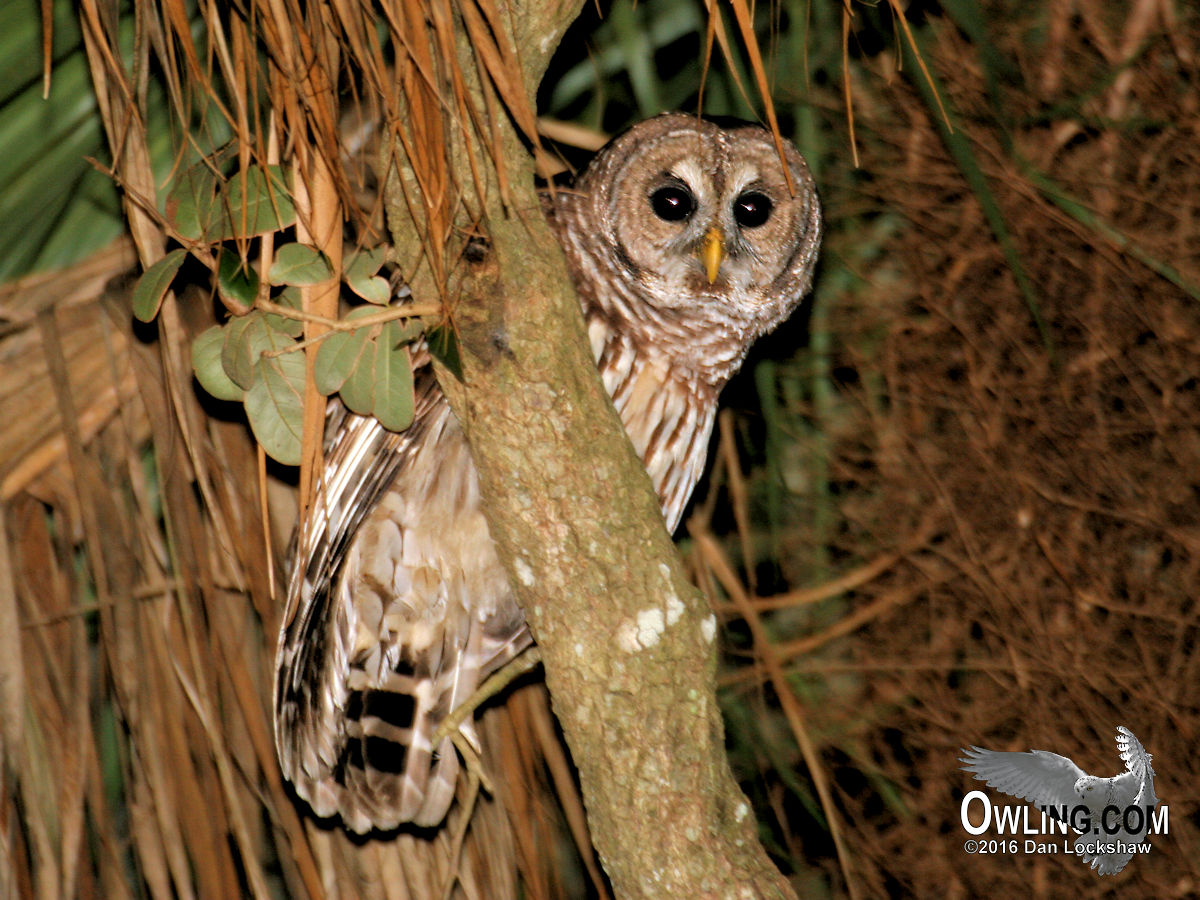Barred Owl Biology
A Reference for North and Central American Owls
Name: Barred Owl – Strix varia
Other Common Names: Northern Barred Owl (varia); Florida Barred Owl (georgica); Texas Barred Owl (helveola); Hoot Owl; Wood Owl; Swamp Owl; Rain Owl; Laughing Owl; Crazy Owl; Black-eyed Owl
Subspecies: There are three subspecies of the Barred Owl in the United States and Canada. There is also a fourth subspecies found in Mexico.
S. v. varia is the most widespread. It ranges from NW California north to SE Alaska east across Canada, C & E USA (S to N Texas and North Carolina).
S. v. georgica is spread across the SE US from Georgia and Florida W to E Texas.
S. v. helveola is resident in southern Texas.
S. v. sartorii is resident in C Mexico.
Measurements and Weights:
Wingspan: 40 – 50 in.
Length: 17 – 24 in.
Tail: 8.5 – 10 in.
Average Weight: Male: 1.4 lbs.
Average Weight: Female: 1.8 lbs.
Description: A medium to large sized owl lacking ear tufts. Male and female are identical in plumage. Head, neck, chest and most upper parts are buffy-white with dark brown barring. The lateral barring of the throat and upper chest sharply break between the vertical streaking of the lower breast and flanks (This is also a very good field mark to distinguish the Barred Owl from the very similar Spotted Owl). The dark brown back is spotted with white; facial disk is grayish white or pale brownish-gray with 4 to 5 concentric semicircular brown rings and the tail is crossed with 6 to 7 sharply defined bands of pale brown. The bill is greenish-yellow to dull buff-yellowish; iris is deep brown to brownish-black; legs and toes feathered buff-white. The talons are dark horn become black at tips. The Barred Owl’s highly distinctive advertisement call, described as “Who cooks for you; who cooks for you all?” or “You cook today; I cook tomorrow”, is the simplest method of finding and identifying this owl.
Young: At first the young are covered with pure white down. A second longer downy coat that is buffy at the base and white on the ends replaces this after a couple of weeks. The head neck and under parts are barred, at this point, with light brown; wing coverts and scapulars are barred also but with broader bars of deeper brown and white tipped feathers. By the first winter the plumage becomes more adult like.




